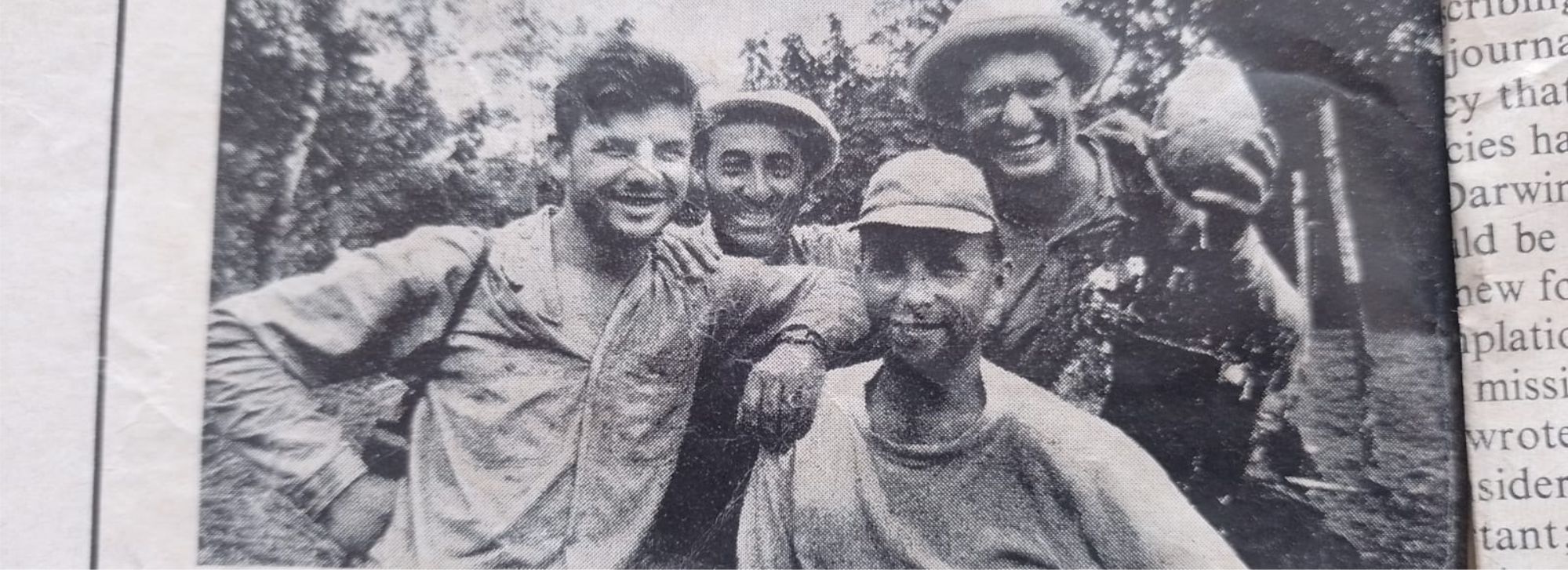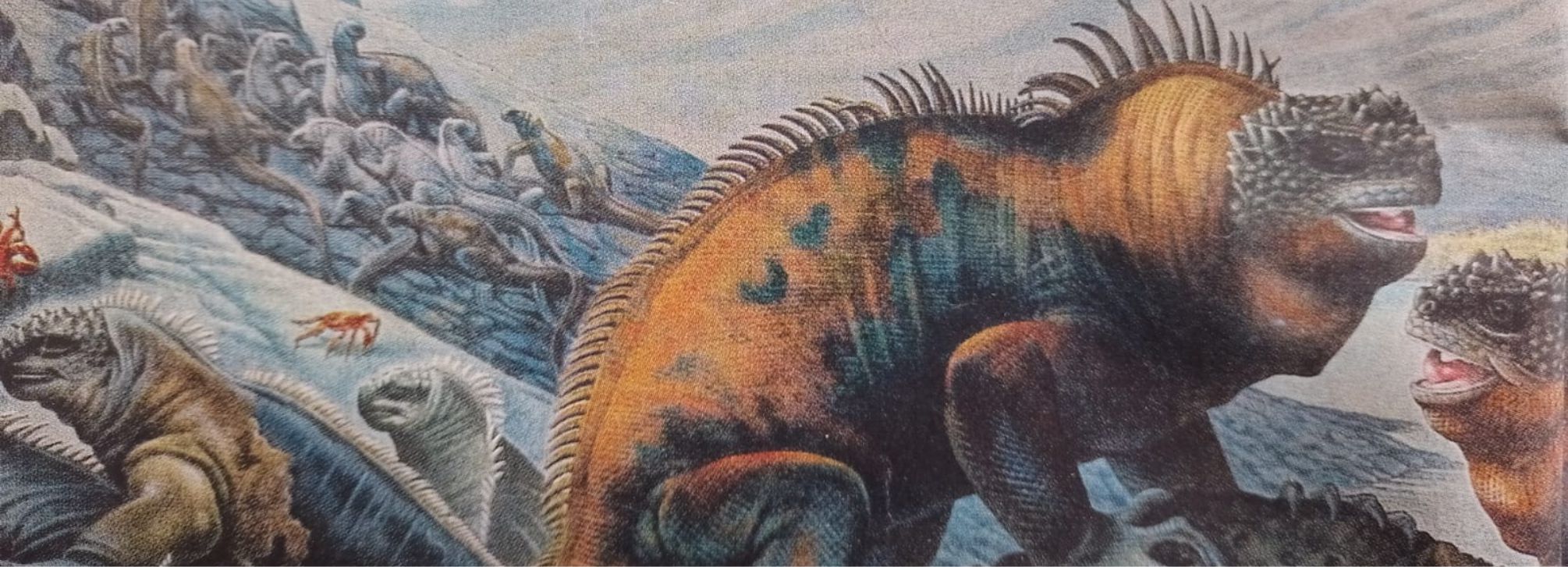Highlight
Galapagos in Life magazine
Although the Galapagos Islands have been described in a multitude of texts ―including books, articles, diaries, reports, and theses―, some of them proved influential enough to put the archipelago on the map and place it in the conversations of an international audience.
This was the case, for example, of the book Galapagos: World's End (1925), the result of William Beebe's expedition on board the Noma; the work inspired numerous European colonists and Robinsons to settle in the Encantadas.
And that of an article published in the September 5, 1958 issue of the international edition of Life magazine.
To tell the story of this text, it is necessary to go back a few years. In January 1954, a young Austrian ethologist, Irenäus Eibl-Eibesfeldt, visited the Galapagos. He was then working as a researcher at the late Max-Planck Institut für Verhaltensphysiologie (Max Planck Institute for Behavioral Physiology), an institution founded by Erich von Holst and Konrad Lorenz and located in Seewiesen (Upper Bavaria, Germany). It was Lorenz, who had already worked with Eibl-Eibesfeldt at the Institut für Vergleichende Verhaltensforschung (Institute for Comparative Behavioral Studies) in Altenberg (Austria) in 1949, who brought him to work there. And it was Lorenz who added him to the first of the two Submarine Research Expeditions, bound for the Caribbean and the Galapagos (August 1953-April 1954) and led by the Austrian biologist Hans Hass, a pioneer of scuba diving.
Eibl-Eibesfeldt arrived in the archipelago aboard Hass' research vessel, the schooner Xarifa, and was so fascinated by the biodiversity, and so concerned about the damage to the local flora and fauna, that he wrote a memorandum to the Ecuadorian government and the Union for the Protection of Nature (now IUCN, International Union for Conservation of Nature), denouncing the situation and suggesting the establishment of a biological station on Galapagoan soil.
Years later, and from those initial experiences on the islands, Eibl-Eibesfeldt wrote Galapagos, the Noah's Ark of the Pacific (1961), which would attract the attention of a multitude of scientists. But his memo had not gone unnoticed: it had revived old ideas and set in motion a complex mechanism. In fact, it had found its way into the hands of influential figures in the world of science, such as the ornithologist Robert I. Bowman, who had already been to the islands in 1952 to document his famous paper on Darwin's finches.

In 1957, ornithologists Jean T. Delacour and S. Dillon Ripley, members of the International Council for Bird Preservation (now BirdLife International), tried to make the idea of a scientific station on the islands a reality by establishing contacts and dialogues with the Ecuadorian government in Quito. At the same time, Marguerite Caram, from IUCN, coordinated the efforts and was in charge of provoking the interest of UNESCO, an organization that finally opted to support the initiative.
UNESCO decided to organize an expedition to the Galapagos and invited Eibl-Eibesfeldt ―after all, the man primarily responsible for setting the whole process in motion― to return to the islands to assess the situation in depth and study the potential location of the scientific station. To finance the trip, Ripley obtained funds from Life magazine, which provided them in exchange for an exclusive article. So, the expedition, which already included Bowman, was joined by photographer Alfred Eisenstaedt (sometimes incorrectly referred to as Eisenstein) and artist Rudolf Freund.
The four spent five months (1957) touring the archipelago. The result of their work was the suggestion to install the biological station ―which they called Darwin Memorial Station, and which would end up being the Charles Darwin Research Station― in Santiago Island or, better yet, in Tortuga Bay, on Santa Cruz Island; a suggestion, the latter, that could not be put into practice due to communication problems, both terrestrial and maritime, between that point of Santa Cruz coast and the nearby town of Puerto Ayora. They also recommended the designation of a dozen islands as protected sites, the enforcement of nature protection laws, the implementation of a tortoise colony, and the development of environmental education programs aimed at the local community. All these recommendations, reflected in a final report produced by Bowman for UNESCO in 1960, were approved in July 1958 by the International Congress of Zoology in London, and would lead, a year later, to the birth of the Charles Darwin Foundation and its Station.
The other fruit of the trip was, naturally, the article published by Life. Titled "The Enchanted Isles", it was the second installment of a series called "Darwin's World of Nature". The text was written by Lincoln Barnett, with support from a number of scientists, and featured color photographs by Eisenstaedt and beautifully produced illustrations by Freund. It included an illustrated fold-out page and quoted extensively from Darwin's work. It was the first article about the islands published in a major international magazine; one of the first popular approaches to Galapagos biodiversity and the science behind all those life forms; and an early disclosure of a conservation process that lasts to this day.
Today, the issue of Life that includes the text has been digitized and can be found in a number of international information repositories. The CDF Library, however, is fortunate to have an original copy in a good state of preservation. Due to its historical and artistic value, it is one of the highlights of the institution's bibliographic and archival collection.
[The image that illustrates this text belongs to the Life article. The black and white photograph shows the four members of the expedition in Galapagos: from top to bottom and from left to right, Eisenstaedt, Freund, Eibl-Eibesfeldt and Bowman].
References
Bowman, Robert I. (1960). Report on a biological reconnaissance of the Galápagos Islands during 1957. Paris: UNESCO.
Corley Smith, G. T. (1990). A brief history of the Charles Darwin Foundation... Noticias de Galápagos, 49.
Eibl-Eibesfeldt, Irenäus (1958). Wonders of a Noah's Ark off the coast of Ecuador. The UNESCO Courier, 11 (1), pp. 20-30.
Eibl-Eibesfeldt, Irenäus (1961). Galapagos, the Noah's Ark of the Pacific. Garden City, New York: Doubleday and Company, Inc.
Eibl-Eibesfeldt, Irenäus (1976). Twenty years later. Noticias de Galápagos, 24, pp. 4-8.
Lundh, Jacob P. (c1999, 2001). The Galapagos: A brief history. [N.d.]: the author.
Barnett, Lincoln. The Enchanted Islands. [Article]. Life, September 5, 1958. [S.d.] : col. ill. : 35 cm. DDC 508. Well preserved.
Subject categories: History of Galapagos | History of science | Natural history
Keywords: Articles | Travels
Time framework: 1958
Text & picture: Edgardo Civallero (edgardo.civallero@fcdarwin.org.ec).
Publication date: 1 October 2023
Last update: 1 October 2023
